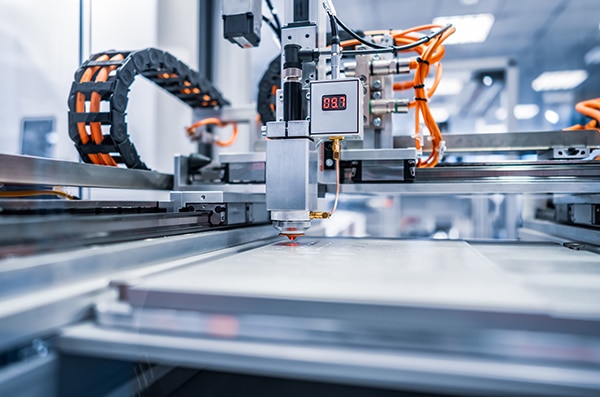Equipment as a Service (EaaS)
Equipment as a Service (EaaS) is the name given to the business model in which machines or production systems are not purchased but provided by a provider for a fee as a subscription.
What is Equipment as a Service (EaaS)?
Equipment as a Service (EaaS) is a comparatively new concept similar to the already widely used Software as a Service business model (SaaS). SaaS allows customers to use subscription-based cloud-based software. EaaS differs in that it involves equipment rental, where the vendor not only offers the product, but continuously monitors and maintains or repairs it to keep it in better working condition and maximise uptime for the customer. This service-oriented business model, also known as Machine as a Service, offers a variety of benefits to both the EaaS vendor and the customer.
Industrial Internet of Things (IIoT): EaaS for the manufacturing industry
Simply put, EaaS enables the usage-based offering of machines. This is a business model introduced by software companies and now being applied in a similar form to industrial machines in the Industrial Internet of Things. In this way, equipment spending by the manufacturing industry can become more stable and predictable, and their operations can be made more efficient. When a machine is purchased in the traditional way, the purchase price is already very high. Worse, this does not even include most of the costs of support, repairs, maintenance and other services. Not so in the Equipment-as-a-Service business model.
EaaS: A subscription model with many advantages
EaaS mitigates risks through predictable subscription pricing, recurring revenue or expenses and flexible contracts. With traditional ownership, the equipment is purchased outright as an investment and it may take more than 10 years to buy a new machine, for example. Alternatively, if the machine is offered on a pay-per-use basis, the customer knows exactly what revenue they can expect over the life of the contract. Equipment-as-a-Service opens up new markets and previously unavailable revenue streams. And by being able to forecast revenue, subscription providers can better adapt to customer needs by offering more value-added services, better assessing interests and building genuine and long-lasting partners and partnerships thanks to regular support and maintenance.
What are the advantages of Equipment as a Service?
Device manufacturers and other companies that have become service providers have much to gain from EaaS. The benefits of EaaS include:
- Improved Equipment Design: Connecting devices provided to the IoT device cloud ensures that data sets from different production cycles are collected and analysed. Machine feedback enables data-driven improvements to machine functions, capacity and operations.
- Development of predictive maintenance strategies: One of the expected benefits from smart manufacturing is predictive maintenance. Equipment-as-a-Service offers manufacturers the opportunity to build equipment more sustainably and to integrate predictive maintenance regulations into it immediately. In this case, data (Data to Cash Model) collected from previous equipment deployments and failures serve as necessary information to design a predictive maintenance strategy for the projected equipment.
- Revenue growth: EaaS creates a new revenue stream for equipment manufacturers with equipment rental. Residual inventory can be converted into revenue streams by offering subscription plans that match the customer’s financial capabilities.
The end user in any EaaS model is the part that uses the equipment for activities related to its production. The benefits for Equipment as a Service final users:
- Lower capital expenditure: Purchasing manufacturing equipment is a capital-intensive expense that many manufacturers struggle with. The Equipment-as-a-Service use case offers the opportunity to turn CapEx into OpEX (“Capex-to-Opex“) while ensuring that the industrial company itself remains responsible for the production process and the quality of the manufactured products.
- Increased data reliability: EaaS also includes the provision of production reference equipment and data to manufacturers to optimise machine utilisation and productivity.
- Lower operating costs: With EaaS, the task of maintaining manufacturing equipment, updating software, firmware or hardware is the responsibility of the service provider. This reduces the operating costs of manufacturers in the IoT and helps them to focus on their core tasks in production.
Conclusion: EaaS opens the door to a whole new way of thinking
The Equipment as a Service business model goes beyond financing, but seeks an overall cash flow for the purchase, payment, management and disposal of equipment. Lifecycle management can be the most important positive aspect of this. It also ensures a truly integrated customer experience. So it can include maintenance, service, asset tracking or other value-added things in lifecycle management.
In order to fully benefit from the new technology in the subscription economy, industrial companies must quickly move away from the common practice of repairing equipment only after a failure or at predetermined intervals. Remote diagnostics and maintenance solutions, as well as the evaluation of usage data, are a key factor in enabling equipment manufacturers to offer their models as a service.


